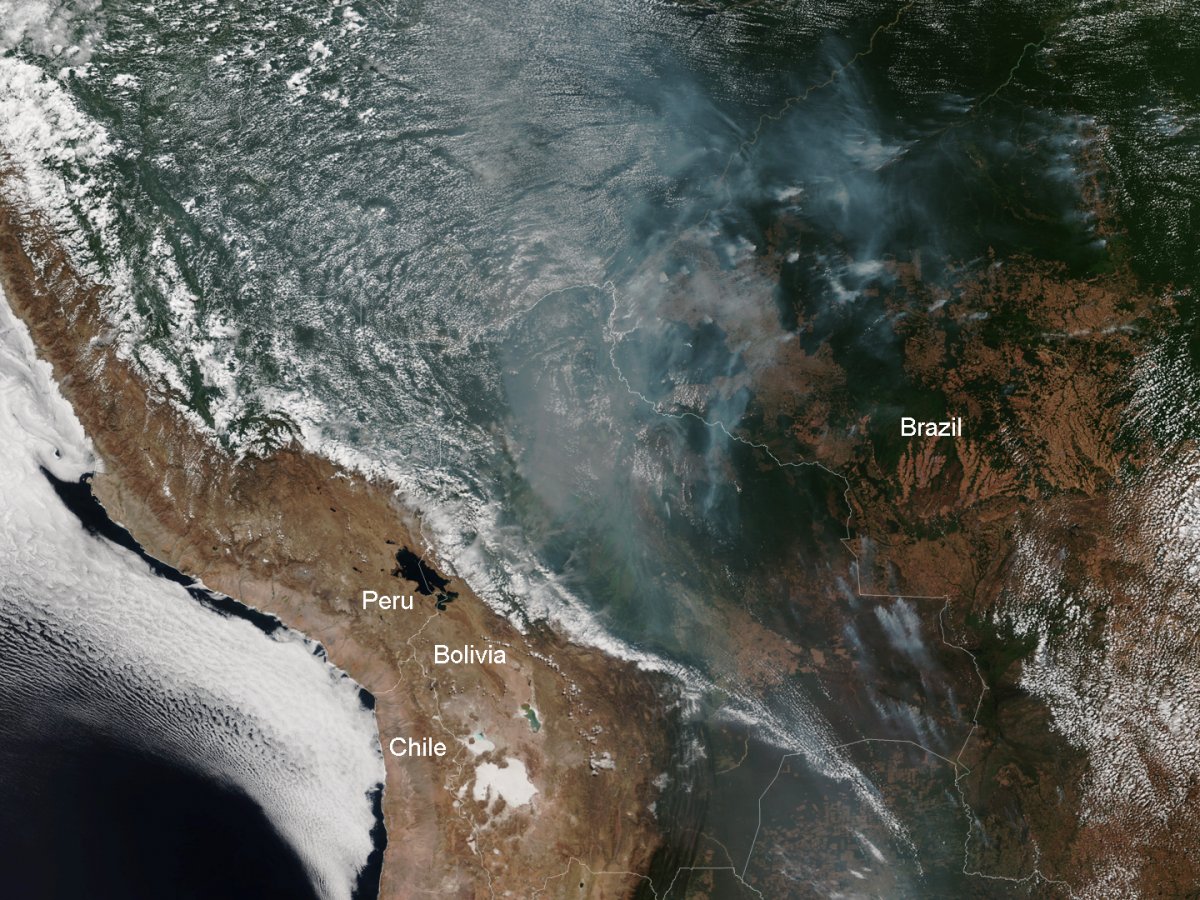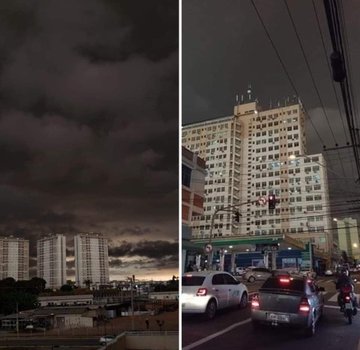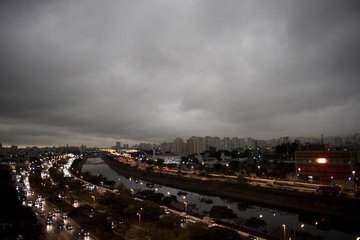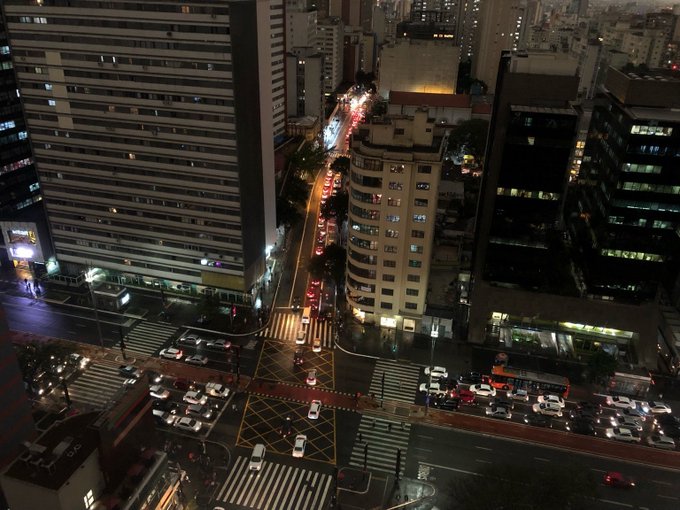https://youtu.be/oy3KEZ8Ou9c
- The Brazilian Amazon region is suffering a record amount of fires, with an 84 percent increase on the same period last year.
- There have been a record number of wildfires in Brazil this year, the country’s official monitoring agency reports.
- Hot and dry conditions, decreased rainfall and global warming are considered reasons for wildfires in Brazil.
- Fire has destroyed much of Amazon’s biodiversity and engulfed Sao Paulo in darkness in the afternoon.
- As media reports were scarce, netizens took up amazonfires and savetheamazon tweets which is trending on social media.
- First reports came from indigenous people, activities and satellite images.
- NASA reports as many as 9000 forest fires in the amazon at present
- Meanwhile the Brazilian President has alleged NGO conspiracy behind this
The Amazon is burning at a record rate and the devastation can be seen from space, reports Science Alert.
Amazon in State of Emergency
As thousands of fiery infernos rage across the Amazon rainforest, tropical vegetation, trees, and the fauna they house are being razed. Since August 15, more than 9,500 new forest fires have started across Brazil, primarily in the Amazon basin.
This year so far, scientists have recorded more than 74,000 fires in Brazil. That’s nearly double 2018’s total of about 40,000 fires.

The surge marks an 83 percent increase in wildfires over the same period of 2018, Brazil’s National Institute for Space Research reported. The largest state in Brazil, Amazonas, declared a state of emergency on Monday.
Already, 2019 has the highest number of fires observed in a single year since researchers began keeping track in 2013 – and there are still four months to go.
Amazon balances CO2 in atmosphere
As the world’s largest rainforest, the Amazon plays a crucial role in keeping our planet’s carbon-dioxide levels in check. Plants and trees take in carbon dioxide and release oxygen back into the air in their process of photosynthesis.
This is why the Amazon, which covers 2.1 million square miles, is often referred to as the “lungs of the planet“: The forest produces 20 percent of the oxygen in our planet’s atmosphere.
Typically, the Amazonian dry season runs from July to October, peaking in late September. Wetter weather during the rest of the year minimizes the risk of fires at other times.
But during the dry season, blazes can spark from natural sources, like lightning strikes. Farmers and loggers also purposefully set fire to the rainforest to clear swaths of the Amazon for industrial or agricultural use.
Blazes spread to adjacent areas
The fires raging in the Amazon now have widespread effects on the rest of Brazil. The smoke plumes from the blazes spread from the state of Amazonas to the nearby states of Pará and Mato Grosso, and even blotted out the sun in São Paulo – a city more than 2,000 miles (3,200 kilometers) away.
This week of fires comes on the heels of another worrisome milestone for the world’s largest rainforest. The month of July set a new record for the most deforestation ever in the Amazon in a single month, The Guardian reported.
The Amazon shrunk by 519 square miles (1,345 square kilometers), which is more than twice the area of Tokyo.
Widespread deforestation
Data from Brazilian satellites indicated that about three football fields’ worth of Amazonian trees fell every minute last month. The total deforested area in July was up 39 percent from the same month last year.
Brazil controls a lion’s share of the Amazon. However, Brazilian President Jair Bolsonaro has indicated that protecting the rainforest is not one of his top priorities. Bolsonaro supports development projects like a highway and hydroelectric dam in the Amazon.
His administration has also cut down on the seizing of illegally harvested timber. In 2018 (under the previous administration), 883,000 cubic feet of illegal timber was seized.
Global Warming also cause wildfires
Warmer conditions because of climate change can allow blazes that crop up during the dry season to grow bigger than they otherwise might have. Global warming also increases the likelihood and frequency of wildfires around the world.
Overall, this year is on pace to be the third hottest on record globally, according to Climate Central. Last year was the fourth warmest, behind 2016 (the warmest), 2015, and 2017.
Hot and dry conditions in the Northern Hemisphere are a consequence of this unprecedented warming. That’s because warming leads winter snow cover to melt earlier, and hotter air sucks away the moisture from trees and soil.
Decreased rainfall also makes for parched forests that are prone to burning. Combined, that has created ideal conditions for wildfires in Brazil and elsewhere around the world.
As of today, parts of British Columbia, Canada, and Alaska are also burning, while more than 13.5 million acres of Siberia are ablaze too.
Allegations against environmentalists
The President made a similar allegation earlier in the day when he suggested groups had purposely started fires while carrying cameras in order to record them.
However, when asked whether he had any evidence about this or if he could specifically identify the “guilty” NGOs, he said there were no written records and it was just his feeling.
Environmental activists have strongly denied these claims.
Effecting Cities
The fires raging in the Amazon now have widespread effects on the rest of Brazil. The smoke plumes from the blazes spread from the state of Amazonas to the nearby states of Pará and Mato Grosso, and even blotted out the sun in São Paulo – a city more than 2,000 miles (3,200 kilometers) away.
Just a little alert to the world: the sky randomly turned dark today in São Paulo, and meteorologists believe it’s smoke from the fires burning *thousands* of kilometers away, in Rondônia or Paraguay. Imagine how much has to be burning to create that much smoke(!). SOS
On Monday, people in São Paulo reported on social media that the sky had gone dark between 3 and 4 pm local time.
The Amazon rainforest has been on fire for weeks, and it’s so bad it’s literally blotting out the sun miles away https://twitter.com/BeyondDShadows/status/1163535602798776321 …
Beyond the Shadows@BeyondDShadowsThis is Sao Paulo today, 4PM. The cloud from the burning of Amazon rainforest in Rondonia, covered the city. Sao Paulo is 3300km (2052 miles) distant from Boa Vista. Athens is closer to London than Sao Paulo is to Boa Vista. Just to give you an idea of the damage.
In total, the blazes have created a layer of smoke estimated to be 1.2 million square miles wide. This image from the European Union’s Copernicus Satellite shows the smoke slicing north to south through Brazil like a knife.
Sao Paulo in Dark
Meanwhile, the fire is causing havoc in Brazil’s most popular city Sao Paulo which has turned dark at 2 pm in the afternoon due to smoke emerging from the fire.

According to an article published in the Economist,
In the middle of the afternoon on August 19th South America’s largest city went dark. Under a thick, black cloud at 3pm, the lights flickered on in São Paulo’s skyscrapers; on the motorways brake lights started to glow in the city’s bumper-to-bumper traffic, and many Paulistanos were worried. Social-media users posted pictures of the gloom, juxtaposing the dystopian afternoon sky with fictional apocalyptic places such as Gotham City from “Batman”, Mordor from “Lord of the Rings” and “the upside down” from “Stranger Things”.
Meteorologists scrambled to explain what was going on. But the most likely explanation, most accept, is that fires burning far away in the rainforest are to blame. Climatempo, a popular private meteorology website, reported that a cold front brought low-lying clouds which then combined with smoke to form the thick black smog. According to the National Institute for Space Research (inpe), forest fires are more common than ever. The number detected so far this year is 84% higher than in the same period last year. Just over half of the fires are in the Amazon.

NASA satellites report as many as 9000 forest fires are raging in Amazon right now
Did you subscribe to our daily newsletter?
It’s Free! Click here to Subscribe!
Source: Science Alert









 Just a little alert to the world: the sky randomly turned dark today in São Paulo, and meteorologists believe it’s smoke from the fires burning *thousands* of kilometers away, in Rondônia or Paraguay. Imagine how much has to be burning to create that much smoke(!). SOS
Just a little alert to the world: the sky randomly turned dark today in São Paulo, and meteorologists believe it’s smoke from the fires burning *thousands* of kilometers away, in Rondônia or Paraguay. Imagine how much has to be burning to create that much smoke(!). SOS























